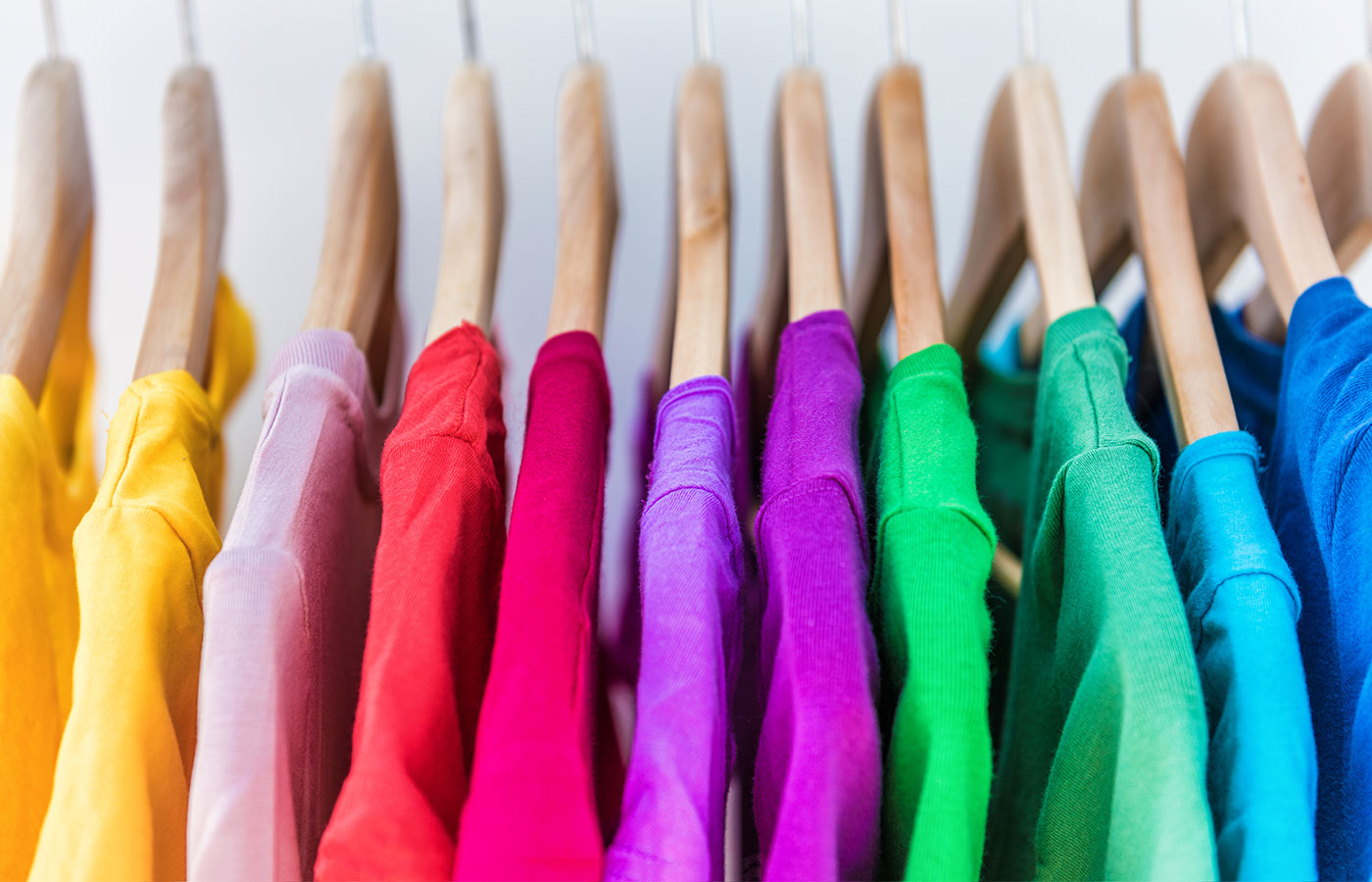The Value of Sustainable Clothes: Just How It Impacts the Setting and Your Wardrobe
Lasting apparel is significantly acknowledged for its vital function in lessening the ecological impact of the rapid apparel industry. By concentrating on eco-friendly products and honest production approaches, it resolves pushing environmental issues. This change not only benefits the world however additionally affects customer choices, leading to a much more thoughtful method to closet administration. Recognizing these characteristics raises essential inquiries about style's future and personal obligation fit it.
The Ecological Footprint of Quick Style

Advantages of Lasting Materials
Lasting materials offer significant advantages, specifically via green fabric choices that decrease environmental injury. These materials also show toughness and durability, minimizing the need for constant substitutes. Because of this, they contribute to an extra sustainable fashion sector and promote responsible customer habits.
Eco-Friendly Fabric Selections
While the garment industry has long been connected with rapid fads and environmental injury, the surge of environment-friendly textile options presents a transformative chance. Lasting materials such as natural cotton, hemp, and Tencel have actually gotten appeal due to their lower eco-friendly impact. These materials are commonly generated without unsafe pesticides and need less water, decreasing their carbon impact - Branded Clothing. Furthermore, lots of environmentally friendly textiles are eco-friendly, adding to a circular economic climate by decreasing waste. Selecting lasting materials not only sustains environmentally accountable techniques however likewise advertises healthier environments. As customers end up being a lot more familiar with their buying power, the demand for eco-friendly materials motivates brands to innovate and take on more lasting production techniques, ultimately benefiting the world and future generations
Sturdiness and Long Life Advantages
Many consumers are increasingly acknowledging the sturdiness and durability advantages of lasting materials in their clothing options. Unlike traditional materials, lasting materials such as organic cotton, hemp, and recycled polyester are engineered to stand up to damage, causing garments that last much longer. This minimized regularity of substitute not only saves consumers cash over time but also diminishes waste generated by fast style. Furthermore, sustainable clothing frequently employs environment-friendly production methods that enhance fabric strength, contributing to a decrease in the total carbon footprint. By buying resilient clothes, customers can cultivate a more lasting wardrobe while delighting in premium pieces that preserve their visual and functionality with time. Consequently, toughness and durability stand as vital advantages of choosing sustainable materials.
Reducing Waste With Sustainable Practices
Reducing waste in the garment industry can be accomplished through ingenious practices such as upcycling and repurposing products. In addition, adopting minimal wardrobe techniques encourages consumers to focus on top quality over quantity, inevitably decreasing apparel usage. Together, these strategies add greatly to a much more sustainable garments model.
Upcycling and Repurposing Products
Upcycling and repurposing products have actually become innovative methods in the style industry, transforming thrown out fabrics into important brand-new items. This strategy not just reduces waste yet additionally encourages creativity and uniqueness in garments layout. By taking old garments and products, developers can create special items that reflect personal style while lowering the need for brand-new resources. Furthermore, upcycling frequently needs much less power and water contrasted to traditional manufacturing processes, greatly lowering the environmental footprint of fashion. As customers become more familiar with sustainability, the appeal of upcycled clothes remains to increase, advertising a round economic situation. Inevitably, these practices add to a more sustainable future, where fashion prioritizes environmental health over fast manufacturing and intake.

Minimalist Wardrobe Approaches
As individuals progressively look for to lessen their environmental impact, embracing minimalist wardrobe approaches has actually gained traction as a reliable strategy to sustainable style. These strategies emphasize top quality over amount, motivating consumers to curate a smaller collection of functional, sturdy clothes. By concentrating on ageless pieces that can be mixed and matched, people can decrease the regularity of purchases and ultimately lower waste.Additionally, minimalism advertises conscious intake, prompting buyers to review the ethical and ecological ramifications of their choices. This strategy not only fosters a much more sustainable way of living however also streamlines daily decision-making regarding attire. As individuals accept minimal concepts, they contribute to a style society that values sustainability and responsible consumerism, inevitably causing a more eco-conscious culture.
The Function of Honest Labor in Sustainable Style
While many customers are increasingly knowledgeable about the environmental effects of their clothes selections, the significance of moral labor practices in lasting style can not be neglected. Moral labor encompasses fair incomes, safe working problems, and respect for workers' civil liberties, forming the backbone of liable style production. Brand names that focus on honest labor not just uplift neighborhoods however additionally established a standard for responsibility in the industry.Moreover, the assimilation of ethical methods cultivates transparency, allowing customers to make enlightened selections about their purchases. This practice contrasts dramatically with rapid fashion's exploitative labor models, which usually focus on profit over people. By supporting companies dedicated to moral labor, customers add to a system that values human dignity alongside environmental sustainability. Ethical labor is not simply an add-on; it is crucial to the wider mission of sustainable style, making certain that the quest for eco-friendliness does not come at the expense of human legal rights.
The Impact of Sustainable Clothing on Carbon Emissions
Lasting clothing has the possible to substantially minimize carbon emissions related to the garment industry. Traditional garment manufacturing contributes notably to greenhouse gas emissions, largely because of energy-intensive production procedures and the use of non-renewable sources. In contrast, lasting style concentrates on green materials, such as natural cotton or recycled fibers, which typically call for less power to produce.Moreover, sustainable brand names tend to embrace more reliable manufacturing methods, reducing great post to read waste and decreasing overall discharges. By prioritizing durability and timeless layout, sustainable clothing motivates consumers to acquire less frequently, more decreasing the carbon impact associated with overconsumption.Additionally, numerous lasting brand names are committed to openness in their supply chains, making it possible for consumers to make informed choices that align with their values. Eventually, shifting towards lasting clothing can result in a considerable reduction in carbon discharges, adding to a much healthier planet and a much more lasting future for the fashion business.
Supporting Local Economies With Sustainable Options
The change towards lasting clothing not only addresses environmental issues however also considerably advantages neighborhood economies. By choosing sustainable fashion, customers often support little services and neighborhood see craftsmens, improving neighborhood durability. These business normally operate on a smaller scale, prioritizing craftsmanship and honest methods over mass production.Investing in locally made sustainable clothes promotes task development and promotes financial development within areas. As customers come to be extra familiar with the ecological influence of their acquisitions, they progressively choose products that reflect their values. This need motivates local makers to embrace lasting methods, contributing to a circular economy.Moreover, sustaining regional businesses reduces transport emissions, aligning with eco-conscious customer habits. The interconnectedness of lasting apparel and local economies emphasizes the essential duty that private choices play in advertising both financial and environmental wellness. By promoting these local links, neighborhoods can thrive while likewise working in the direction of a more lasting future.
Transforming Your Wardrobe: Tips for a Sustainable Closet
As people seek to lower their environmental influence, changing a wardrobe right into a sustainable wardrobe ends up being a necessary action. One reliable technique is to review existing clothes, maintaining only products that are put on routinely and that straighten with sustainability objectives. Prioritizing high quality over quantity is essential; purchasing resilient items from environment-friendly brand names can significantly minimize waste.Additionally, incorporating second-hand products can rejuvenate a closet while minimizing environmental damages. Organizing apparel swaps with pals or contributing extra things can further promote sustainability.When buying, individuals need to look for products that are organic, recycled, or biodegradable, and prevent quick style stores - Branded Clothing. Ultimately, practicing mindful intake by attentively taking into consideration each purchase can add to a more sustainable lifestyle. By carrying out these pointers, one can develop a closet that shows individual style while sustaining environmental stewardship
Often Asked Concerns
Just How Can I Recognize Lasting Apparel Brands?
To recognize lasting get more garments brand names, one need to look into products made use of, look for qualifications like Fair Profession, and examine the brand name's openness concerning their manufacturing processes, labor techniques, and ecological impact, guaranteeing ethical and environmentally friendly practices are focused on.
What Are the Prices Associated With Sustainable Style?
The costs connected with sustainable fashion can vary considerably. Greater manufacturing expenses, moral sourcing, and eco-friendly products usually result in enhanced list prices, which might discourage some customers while attracting environmentally mindful consumers.
Can Lasting Apparel Be Trendy and stylish?
Lasting clothing can without a doubt be stylish and fashionable. Developers progressively focus on ingenious products and ethical manufacturing methods, verifying that style and sustainability can exist together. Customers currently have varied options that mix looks with environmental consciousness.
Just How Does Laundering Clothes Affect Their Sustainability?
Cleaning garments significantly impacts sustainability by consuming water and energy, adding to air pollution, and causing microplastic launch. Constant cleaning can weaken fabrics, shortening their life-span and raising the requirement for replacements, inevitably aggravating environmental worries.
What Is the Life-span of Sustainable Clothes Compared to Quick Style?
The life-span of lasting apparel usually goes beyond that of rapid fashion things, often long lasting numerous years as a result of top quality products and craftsmanship. On the other hand, quick fashion garments may degrade quickly, necessitating even more constant substitutes. Lasting apparel is increasingly recognized for its crucial function in decreasing the ecological influence of the rapid style market. While lots of consumers are progressively conscious of the ecological consequences of their clothes options, the relevance of honest labor techniques in lasting fashion can not be neglected. Branded Clothing. Sustainable clothing has the potential to substantially lower carbon exhausts linked with the fashion industry. In comparison, lasting fashion concentrates on environment-friendly materials, such as organic cotton or recycled fibers, which typically need less energy to produce.Moreover, sustainable brands often tend to take on a lot more effective manufacturing practices, minimizing waste and lowering total emissions. By prioritizing toughness and classic layout, lasting apparel urges consumers to buy much less often, further lowering the carbon footprint linked with overconsumption.Additionally, many lasting brands are dedicated to transparency in their supply chains, enabling consumers to make enlightened options that straighten with their values
Comments on “How to Identify High-Quality Fabrics in Branded Clothing”